Money
Right this way, please
Recent Indian government moves are expected to boost tourist arrivals to Nepal
Sangam Prasain
Nepal’s tourism industry is naturally agog with anticipation as there are around 2 million government employees down south, and that’s a lot of potential tourists. India is already the largest source market for the country.
Last year, it sent 180,974 air travellers to the Himalayan republic.
According to the Tourism Ministry, the share of Indian visitors in Nepal’s tourism stands at 23 percent. Unfortunately, they are not known for staying long or spending much in Nepal, pointing to an area the tourism industry needs to work on.
In 2013, Indian tourists spent 8.67 days on average in Nepal, putting them among the shortest stayers in Nepal. Of the total Indian arrivals, 142,054 were first time visitors. More than 528,321 Indian tourists enter Nepal through eight border points annually.
For the last few years, Nepal has been seeing a gradual decline in Indian arrivals due to the closure of the casinos and lack of tour packages appealing to them. However, industry watchers say things are getting better now.
Part of the optimism stems from the statement made by Indian Prime Minister Narendra Modi during his visit to Nepal for the 18th Saarc Summit last November emphasizing the need to enhance connectivity between the two countries to boost tourism.
In fact, Modi’s declarations and substantial changes in India’s policy towards Nepal could mean a lot for Nepal’s tourism. “The Indian government has started to sort out potential bottlenecks that have been hindering trade and tourism growth between the two countries,” said Aditya Baral, spokesperson of the Nepal Tourism Board. “Most importantly, the Modi government has implemented almost all the commitments it made to Nepal and this, in fact, has strengthened people-to-people and government-to-government relations.”
In a key policy change, India has declared that individuals from India can carry Rs 1,000 and Rs 500 Indian currency (IC) notes totalling up to IRs 25,000 to Nepal.
The currency restriction, which forced travellers to carry large wads of Rs 100 notes, was one of the longstanding issues for Indians visiting Nepal. The Indian central bank had banned the use of large denomination notes in Nepal citing security concerns.
Similarly, the Indian government has agreed to review the airspace agreement to provide more entry routes for airlines coming to Nepal. The airspace agenda, which had been gathering dust for a long time, was endorsed during Modi’s recent visit to Nepal.
The government has requested India to open three more air entry points at Janakpur, Bhairahawa and Nepalgunj to allow Nepali carriers to link major Indian cities in the near future.
The additional cross-border direct routes are expected to facilitate flights between regional airports in Pokhara and Bhairahawa, and this will save time and money for air travellers and also improve air connectivity between India and Nepal. Modi had also flagged off a bus service between Kathmandu and New Delhi.
Nepal and India have also signed a landmark agreement on tourism to mutually promote the Buddhist pilgrimage circuit. The Buddhist pilgrim route connects Bodhgaya in Bihar and Sarnath and Kushinagar in Uttar Pradesh in India and Lumbini in Nepal.
Likewise, the two governments have agreed to strengthen cultural ties by establishing sister city relations between Kathmandu and Varanasi and Janakpur and Ayodhya. While Kathmandu is the city of Pashupatinath and is also called the city of big and small temples, Varanasi is home to Kashi Vishwanath, one of the most revered Hindu temples, and numerous other temples and ghats.
Likewise, while Ayodhya in India is the birthplace of Lord Ram as per Hindu mythology, Janakpur in Nepal is believed to be the home of his consort Sita. “With all these initiatives, one can expect a spike in terms of tourist arrivals from India in the near future,” added Baral.
Indian carriers account for the largest share of inbound tourism in Nepal. According to Tribhuvan International Airport (TIA), they fly in almost 40 percent of all the tourists visiting Nepal.
Currently, four Indian carriers — Jet Airways, Air India, Spice Jet and IndiGo — serve Nepal and hold around 30 percent of the market share.
As Nepal has not been able to fully cash in on the Indian market for a long time despite the proximity and similar religions and cultures, Modi’s visit to Nepal has given an optimistic outlook for the country’s tourism, said Binayak Shah, vice-president of Hotel Association Nepal.
The leave travel concession announced by the Indian government for its employees should boost arrivals from the southern neighbour. “Even nominal numbers from India will mean a lot to Nepal.”
However, there are some things Nepal needs to do too. According to Shah, the country needs to develop tour packages more effectively as limited offerings had forced Indian visitors to turn elsewhere, particularly Thailand. “The closure of the casinos affected Indian arrivals the most.”
Meanwhile, most of the bordering towns in Nepal have started realizing the potential of Indian visitors. A number of tourist standards hotels are being constructed in the bordering areas to cater to Indian visitors.
The announcement of India’s leading luxury hotel chain — The Leela Palaces, Hotels and Resorts — to enter Nepal is also a happy sign for Nepal’s hospitality industry.
Nepal’s Summit Group of Hotels and Resorts and Leela have signed a memorandum of understanding to establish four hotels across the country, including a five-star deluxe hotel in Kathmandu.
Other properties planned to be built in Nepal under the Leela banner will be located in Pokhara and two pilgrimage hubs, Lumbini and Janakpur. The plan to develop a hotel in Lumbini, the birthplace of Gautam Buddha, is part of Leela’s initiative to establish a Buddhist trail from Nepal to Bodhgaya, Nalanda and Varanasi in India.
Meanwhile, the Indian government’s plan to issue visa on arrival to travellers from nearly 180 countries has also been seen as a big development for Nepal as it is expected to increase tourist inflow into the country.
Experts said that there were greater chances of tourists visiting India making a side trip to Nepal if the proposed visa liberalization scheme was implemented by the Indian government.




 18.12°C Kathmandu
18.12°C Kathmandu






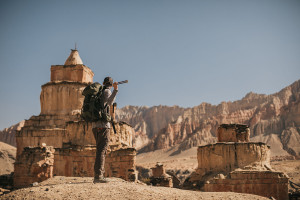

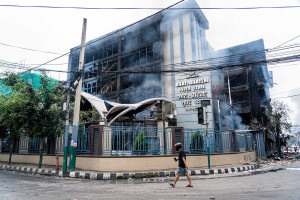
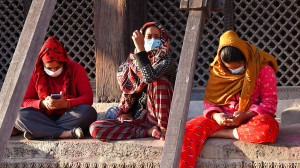
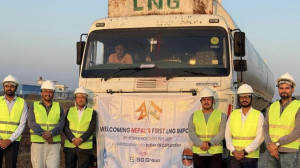

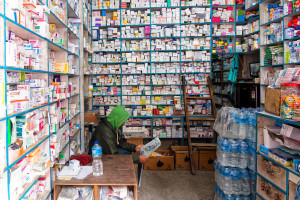
%20(1).jpg&w=300&height=200)
